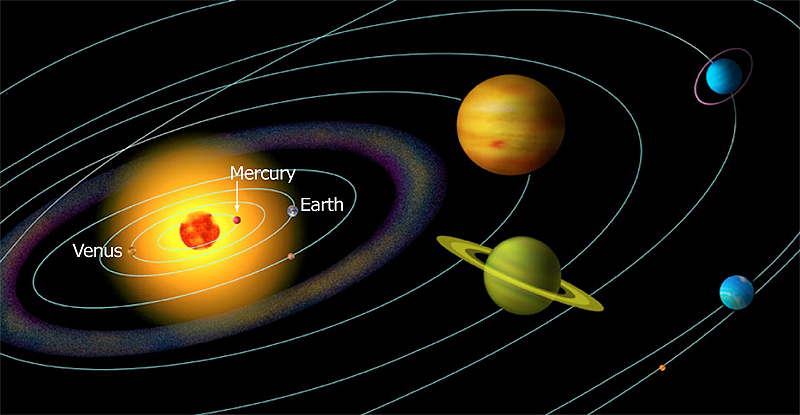Physical Properties: Mercury Vs Sun

Mercury vs sun – Mercury and the Sun are celestial bodies with vastly different physical properties. Mercury, the closest planet to the Sun, is a small, rocky world, while the Sun is a massive, luminous star at the center of our solar system.
Mercury and the Sun are vastly different celestial bodies, yet they share a common thread: their captivating presence in our solar system. As we delve into the mysteries of their contrasting natures, let us pause for a moment to explore the intriguing question of “quien es la novia de edson alvarez” ( link ).
The allure of this enigmatic figure echoes the celestial dance between Mercury and the Sun, each celestial body holding its own secrets and illuminating the vast expanse of our universe.
Size and Mass
The Sun is much larger and more massive than Mercury. The Sun’s diameter is approximately 109 times that of Mercury, and its mass is about 330,000 times greater. This difference in size and mass is primarily due to the Sun’s nuclear fusion reactions, which generate vast amounts of energy and cause it to expand.
Composition and Density
Mercury is primarily composed of iron and silicate minerals, while the Sun is composed mostly of hydrogen and helium. The Sun’s core is extremely dense, with a density of about 150 g/cm³, while Mercury’s density is only about 5.4 g/cm³.
While the sun, a blazing inferno, dominates our celestial landscape, Mercury, a diminutive planet, remains elusive and enigmatic. Its proximity to the sun makes it challenging to observe, yet it holds tantalizing secrets that have captivated scientists and enthusiasts alike.
From its cratered surface to its thin atmosphere, Mercury presents a fascinating contrast to the sun’s incandescent brilliance. Like Edson Alvarez’s enigmatic girlfriend, Mercury’s allure lies in its enigmatic nature, forever tantalizing us with its hidden depths.
Surface Features and Atmospheres
Mercury’s surface is heavily cratered and has a thin atmosphere composed mainly of oxygen, sodium, and potassium. The Sun’s surface is constantly changing and turbulent, with features such as sunspots, prominences, and flares. The Sun’s atmosphere, called the corona, extends millions of kilometers into space and is composed of ionized gas.
Orbital Characteristics

The orbital characteristics of Mercury and the Sun play a crucial role in determining their positions and behaviors within the solar system. These characteristics include their orbital periods, eccentricities, and inclinations.
The orbital period refers to the time it takes for a celestial body to complete one full orbit around another body. Mercury has an orbital period of approximately 88 Earth days, while the Sun, being the center of the solar system, has an orbital period of 0 days.
Eccentricity measures how elliptical an orbit is, with a value of 0 indicating a perfect circle and values closer to 1 indicating a more elongated ellipse. Mercury’s orbital eccentricity is 0.206, indicating a slightly elliptical orbit. The Sun, on the other hand, has an orbital eccentricity of 0, indicating a perfectly circular orbit.
Inclination refers to the angle between the orbital plane of a celestial body and the reference plane, typically the plane of the Earth’s orbit around the Sun. Mercury’s orbital inclination is 7.0 degrees, while the Sun’s orbital inclination is 0 degrees, as it serves as the reference plane itself.
These orbital parameters have significant implications for the positions of Mercury and the Sun within the solar system. Mercury’s proximity to the Sun and its elliptical orbit result in extreme temperature variations on its surface. The side of Mercury facing the Sun can reach temperatures of up to 450 degrees Celsius, while the side facing away from the Sun can drop to -180 degrees Celsius. The Sun’s central location and circular orbit, on the other hand, provide a stable and consistent source of energy for the planets orbiting it.
Orbital Parameters Comparison
| Orbital Parameter | Mercury | Sun |
|---|---|---|
| Orbital Period | 88 Earth days | 0 days |
| Eccentricity | 0.206 | 0 |
| Inclination | 7.0 degrees | 0 degrees |
Energy Output and Luminosity

Mercury and the Sun exhibit vastly different levels of energy output and luminosity, primarily due to their contrasting sizes, masses, and internal structures.
The Sun, a colossal star, generates energy through nuclear fusion reactions in its core. Hydrogen atoms combine to form helium, releasing enormous amounts of energy in the process. This nuclear fusion process sustains the Sun’s immense luminosity, making it a primary source of light and heat for our solar system.
Mercury’s Energy Output
In contrast, Mercury, a small, rocky planet, lacks the necessary mass and internal conditions for nuclear fusion. Its primary energy source is sunlight, which it reflects and absorbs. Mercury’s surface temperature can reach scorching highs during the day due to its proximity to the Sun, but it plummets at night due to the absence of an insulating atmosphere.
Impact on Habitability, Mercury vs sun
The disparity in energy output and luminosity between Mercury and the Sun has profound implications for their habitability. The Sun’s constant and intense energy output sustains life on Earth and other planets in its habitable zone. Conversely, Mercury’s lack of nuclear fusion and extreme temperature fluctuations make it an inhospitable environment for life as we know it.